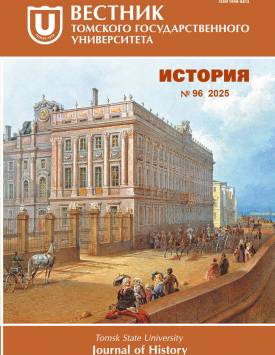Cities of Siberia in New Times in the Discourse of Modern Historical Research (based on the results of the conference “Cities of Siberia in Modern Times: Economic and Socio-cultural dimensions”, Novosibirsk, March 18–19, 2025)
The article presents an overview of the All-Russian scientific and practical conference with international participation “Cities of Siberia in New Times: Economic and socio-cultural dimensions”, dedicated to the 80th anniversary of the famous scientist, Doctor of Historical Sciences, Professor Dmitry Yakovlevich Rezun (1945-2012), held in March 2025 at the Institute of History of the Siberian Branch of the Russian Academy of Sciences. The main directions of the forum’s work and the issues put forward for discussion are described. Among the latter are: the genesis and evolution of urban settlements in Siberia, the composition and daily life of the urban population, the interaction of state and public structures, the preservation, study and popularization of the historical and cultural heritage of Siberian urban planning. It is concluded that this event can be considered as a kind of cross-section of modern, primarily Russian, historical research in the field of Siberian urbanism of the 17th - early 20th centuries. It reflected the current situation, emphasizing both the most relevant and actively developing topics, as well as a clear disparity in the interests of researchers, in particular, a shift in emphasis to a later, post-reform period. The author declares no conflicts of interests.
Keywords
Siberian urban studies, D.Ya. Rezun, scientific and practical conference “Cities of Siberia in New Times”Authors
| Name | Organization | |
| Komleva Evgeniya V. | Institute of History of the Siberian Branch of the Russian Academy of Sciences | feodal@history.nsc.ru |
References

Cities of Siberia in New Times in the Discourse of Modern Historical Research (based on the results of the conference “Cities of Siberia in Modern Times: Economic and Socio-cultural dimensions”, Novosibirsk, March 18–19, 2025) | Tomsk State University Journal of History. 2025. № 96. DOI: 10.17223/19988613/96/25
